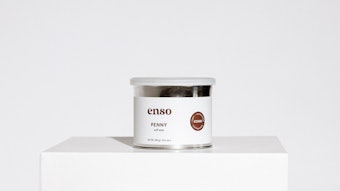
Going green—undoubtedly you’ve heard a lot about it lately and are maybe even wondering how you can get in on the movement.
A deciding factor
Making the choice to implement green initiatives in a spa isn’t always an easy one; but after weighing their options, several facilities have come up with their own green plans. Many owners are inspired by eco-conscious upbringings, as well as their concern for the environment, and are finding that an eco-friendly philosophy can provide their business with an edge.
“Anything that I can do to help make people feel happier and healthier is good, and you get a real connection with clients in this environmental way,” says Randi Ragan, owner of the mobile GreenBliss EcoSpa inLos Angeles. “It’s great to see the difference it makes in peoples’ lives now that they aren’t mindlessly consuming, and are realizing their impact on the world and on others.”
The positive emotions are often felt all around, developing an atmosphere of sharing instead of competition. “At the end of the day, doing things that are eco-minded just made us feel good,” says Tiffany Cannon, co-owner of the Silken Tent spa in Glenview, Illinois, a Chicago suburb. Sherri Stewart, Silken Tent’s other co-owner, adds, “People are really starting to pay attention to the environment and the green movement—it was really a huge shift in the last two years. We are all learning about this stuff together, so sharing and support is great.”
Bob Ulmer, director of recreation with the Ginn Reunion Resort in Reunion, Florida, 25 miles outside of Orlando, agrees, noting that the importance of these initiatives also has a more far-reaching impact. “We need to think about the world we are leaving for our children,” he says. “Recently having my own child, I’ve thought about it a lot more, and it’s really becoming a bigger issue in every industry. We need to be thinking, ‘What can we do better?’ and become more educated on the topic. The more educated we are, the more options we will have.”
Eco-offerings
Of course, just talking about being environmentally friendly doesn’t make it so, and in the crowded marketplace, earth-friendly options can help distinguish a spa from its competitors. In fact, several spas have found that the secret to offering unique treatments can lie in their eco-friendliness, and these green offerings can have incredible results. “Our enzyme bath is an earthy, biologically active, organic treatment that offers real healing coming directly from nature,” says Michael Stusser, founder of Freestone, California’s Osmosis Day Spa Sanctuary, a founding, or “seed,” spa of the Green Spa Network (GSN).
And green products can produce high-quality treatments, as well. “We use very active products that contain fruit enzymes that help deliver very satisfying results,” Ragan says. “We are also educating people about using natural products versus medical procedures. Theproducts we use are a high quality and aren’t diluted so you can use less, and they last a long time. You can feel on your skin that it’s very well done, and people respond to that.”
Organic products are often an important part of being a green spa, with many spa owners spending months, or even years, researching options to find the best organic skin care line for their business. “If you have products that are covering 100% of your skin’s surface, wouldn’t you want them to be as natural and healthy as possible?” asks Stewart. “The line we use in our body therapies has no preservatives, no chemicals and no parabens.”
And the results can be a great source of pride—and fun. “We have a body wrap featuring products that are so earth-friendly, I’m pretty sure you could almost eat it—although I wouldn’t recommend that,” laughs Ulmer.
Building up
Other considerations when being green include a spa’s building and equipment. “We currently have a very basic formal environmental policy statement, titled Our Promise, that touches upon our utilization of green building practices in the construction and remodeling of our facility, and our commitment to maintaining a truly healthy indoor environment through the utilization of building-wide air and water purification systems,” says Ali Kulmer, owner of The Kura Door spa in Salt Lake City.
“We also have a formal purchasing policy for the spa that dictates what and from whom we order,” she continues. “We purchase only 100% post-consumer content recycled paper, and all refreshments provided in the spa are organic. All products used in all of our spa services are 100% natural and, in most cases, organic. Items such as table linens, towels and robes provided in the spa are 100% cotton.”
Organic linens and food choices are definitely becoming popular in spas’ efforts to go green as well, and these initiatives can be taken even farther when bringing team members and clients into the mix. “We provide our students with recycling options to help encourage their environmental efforts,” says Frederic Holzberger, the founder of two award-winning Aveda Fredric’s Institutelocations in Cincinnati and Indianapolis. “We have classes on environmental initiatives, and this creates a ripple effect into the community.”
An example of this effect was experienced when the two locations altered something as small as packing materials. “We shipped our product with an organic peanut packaging material called Eco-foam, which many customers then used as toe dividers during pedicures,” Holzberger says. “Rather than going into the landfill, clients would dissolve the peanuts in water either outside or during the pedicure process. We consciously educated our customers, and they, in turn, educated others.”
Learning what works
Figuring out which green initiatives work for a spa is essential, especially when just starting out. “To go green, it’s important to do your homework and go about it with patience,” says Ulmer. “Do little things, simple things—it doesn’t have to be all at once. For bigger items, start talking to your vendors, pushing them to offer more green options. If people ask for it, companies will produce it. It all comes down to the end user.”
And with the end user, spas are getting some of the best support possible. “Our clients are very responsive to the initiatives. It helps to increase loyalty—people come back because of what we do for the environment,” Stusser explains. Some spas are finding clients responding in unexpected ways that are even more environmentally encouraging. “In our Indianapolis location, we put up a plaque that lists all the eco-friendly materials we used in construction, and we find customers copying down the list for their own use,” Holzberger says.
With spas recently focusing more on wellness, the green theme can fit right in, although pushing eco-consciousness isn’t something typically done at spas due to the risk of interrupting a relaxing environments. However, there are ways spas encourage Earth-friendly offerings. Stewart comments that Silken Tent’s estheticians evaluate the skin to help clients receive the best organic and natural treatments, and Cannon adds, “There are so many cool green options out there, and so many good ideas about how to implement them.”
Kulmer also finds her staff to be helpful in environmental service encouragement. “Our therapists serve as educators, telling clients about organic products and menu items,” she says. “People at the front desk are thoroughly trained and educate themselves in order to answer questions about our commitment.”
The Kura Door’s efforts extend beyond the spa doors, as well. “We are constantly looking for ways to inspire wellness and environmental stewardship within our own community,” Kulmer says. “We have been astounded by the overwhelmingly positive response that our spa concept has elicited during the past four years from our community, the tourism market and the press; and we feel strongly that the primary reason for our great success up to this point stems from our commitment to the convictions of sustainability and a holistic approach to self-care.”
Rhana Pytell, owner of GAIA Day Spa, located in La Jolla, California, another GSN seed spa, also sees this trend in clients. “People are really encouraged by what we’re doing, and we let them know how they can live more cleanly and are inviting people to live differently,” she says. “This is not a niche market—it’s for the mass market. People want to make this change, and they will find the channels to do it. It’s fighting ingrained habits, and making people aware of their choices and how they affect things. It’s realizing that we have other choices.”
Even with all the encouragement, however, there are occasional issues with going green. Although quality organic and eco-friendly products are becoming more affordable and readily available every day, problems still arise. “The one area that we have had challenges with from a green standpoint in our spa is lighting,” says Kulmer. “We have had a very difficult time procuring dimmable compact fluorescent light bulbs that provide a warm ambient glow and that do not flicker when turned down.”
There can also be the question of the financial value of going green, with eco-friendly options sometimes proving to be more costly. However, Holzberger sees this as a trade-off, saying, “It’s a short-term pain for a long-term gain. It will cost us a lot more in the long run not to do it.”
Taking the baton
With eco-friendly, organic options becoming more prevalent, a myriad of spas are beginning to embrace the green philosophy. There is still a long way to go, however, but the industry is willing to share ideas for the greater good.
Identifying your green strategy is one of the best places to start. “Clearly define your vision and stay true to your convictions,” says Kulmer. “It’s easy to stray, but it’s also easy to just start small, like using recycled paper products.” Holzberger agrees, saying, “Make a commitment to action. Even doing the simple things helps.”
Engage your team members,” recommends Stusser. “It has to be an engaging process that embraces the larger vision of healing. It’s a morale booster, and people are proud to be a part of it. It gives them a greater sense of meaning and of contributing to making the world a better place to live.”
With your spa team onboard, generating ideas, both large and small, becomes easier. Whether it is finding a new skin care line, offering organic refreshments, installing energy-saving equipment or implementing something else you’ve dreamed up, having staff supporting and providing ideas for your green initiatives is crucial.
For more help in getting started, there are also organizations that can offer ideas. See Greening Technology. As a member of the GSN, The Kura Door explains how it has been working to aid the industry. “With GSN, we have monthly informative forums discussing things such as greening a space and sharing feedback with one another,” says Kulmer.
“GSN is set up for us to find ways to support each other, to share information and resources,” says Stusser. “We want to inspire the industry to go green, and to create the tools to help everyone get there.”
Keeping up with what’s going on with the greening of the industry is another integral part of utilizing the best—and easiest—eco-friendly methods. “It’s a never-ending process, and so many more people need to get involved,” says Holzberger. “It’s only going to become a bigger issue. Constantly educating yourself and your team members is important. Create benchmarks for yourself about how far you go and how far you want to go.”
A green way of life
In any change, there are challenges and setbacks, but also successes and triumphs. When it comes to the environment, these issues could have more repercussions than any other business decision you ever make. A few green spas have begun to lead the pack in this worldwide movement, and they are working to keep those successes outnumbering the setbacks.
“We are all in this together, and no place is perfect,” says Pytell. “We need to all work for sustainability, and the spa industry is integral in the movement. We are part of the environment, in the environment, and we need to make that connection that we are hurting ourselves.” And the work to make things right is only just beginning.
Are you interested in doing more to help the Earth, making your own spa more sustainable in the process? The following Web sites provide green ideas, tips, support and more on the ways and means in which you can offer eco-friendly options and promote sustainability in your business.
www.greenspanetwork.org
www.lohas.com
www.greenbiz.com
www.11thhouraction.com
www.responsiblepurchasing.org
www.energystar.gov
www.usgbc.org/DisplayPage.aspx?CategoryID=19










